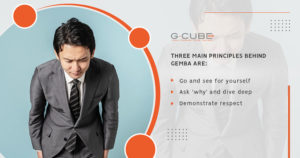As organizations embark on a rapid digital transformation journey, most of them have had to reassess the efficiency of their processes for a virtual world. Many functions such as Sales have had to be reimagined entirely to accommodate for the lack of personal engagement.
Enter Contactless Sales that enables sales personnel to sell products remotely and offer an enhanced customer experience, using technology. But how do you gear up for this unprecedented shift in operations? We’re working with many of our Pharma clients to equip their Medical Reps for this change. Our change strategy revolves around the following questions:
- Is the organizationready?
- Are the employees ready?
- Is the process ready?
Organizational Readiness:
From an organizational point of view, the key readiness in terms of investment and deployment relies on technological transformation and enablement. Organizations must incorporate the appropriate technology and build digital presence, assets and touchpoints to enable employees and build a seamless experience for the customer.
- Digital assets like virtual sales collateral, demos, simulations, portals etc. help Medical Reps provide critical information to their clients. Physical, Leave Behind collateral must now be converted into light, digitally-sharable formats. Digital assets are accessible anytime, anywhere. Deep thought must be given to increasing digital collateral without increasing tech fatigue amongst Reps and clients, both.
- A robust LMS, as a platform, can incorporate this collateral as part of training and ready reckoners and make it easily searchable. Imagine the Rep’s journey in an offline environment and replicate it on a virtual one.
- Consider the client’s journey from research to fulfillment and create stage gates to outline what must change. Ask and answers questions such as what are the tangible and intangible elements that are essential to the process and must be converted into virtual engagements; which collateral must be digitized to assist your Medical Reps; which medium/s suits your process best, for customer education and to render sales; what follow-up mechanism should you adopt; consider setting up payment gateways for closing sales and finally, which platform/s should you adopt to meet all the above needs.
Employee Readiness:
Tech deployment alone is not a guarantee for success. Organizations need to ensure their employees are well prepared for the change as well. All stakeholders must be on-board with the changes. Adoption is a function of comfort with changes and a supportive structure.
- Organizations may need to train employees on how to better use technology for increased productivity. For example, comfort with using live meeting tools may not have seemed important so far but is critical to the process now. The lack of it will create problems like broken communication and frustrated customers which defeats the purpose. An LMS is equipped to handhold users on how to use its features and provide updated training as required. Training Medical Reps on technology use and the soft skills needed to sell using only a tech interface is critical to success. What was visible in body language in face-to-face interaction, such as a smile, must now be conveyed in tone, demeanor, and language on the virtual plane. The platform can also assess problem areas for each employee and suggest training to help performance and increase productivity. Equipped with a mentoring module, it eases interaction between mentors and their mentees.
- As training becomes the urgent need for an effective roll-out, it must also be quickly adapted to the virtual domain. Converting training content to a virtual format is a first. If a large, geographically dispersed, ethnically diverse group of employees must be trained simultaneously, you will want to localize training content. Longer, Instructor-led, classroom sessions might need to be replaced with multi-format, Microlearning content to make virtual learning engaging and retentive.
- A mobile-compatible format for training and sales will now be essential as most Reps will need ready access at their convenience, on their available devices. As on-the-job training also becomes virtual, easy access to it is critical. These measures will ensure that your Medical Reps are skilled right and tech ready.
Process Readiness:
Successful tech transformation requires that all your existing systems are either converted or integrated seamlessly. This is where a robust platform makes a difference. All our Pharma clients are unique in their requirements – some are equipped with multiple systems and some others require a platform that integrates one or many of them on one system. As we customize our platform for each requirement, some of the basics remain the same.
- A key basic, from a Sales point of view, is creating a content repository. All digital collateral must be categorized, updated and made available in a logical fashion. Medical Reps require multiple collateral at various points in their interaction with a client. This should be organized and searchable at the point of need and served in the fashion required. This process orientation also makes better use of existing systems such as the DMS.
- One of the greatest benefits of taking the process virtual is the increased recording of analytics. With each action recorded in the background, organizations can now benefit from the immense data collected to review performance challenges, areas that need improvements, fix bugs etc. These will all contribute to enhancing quality, engagement, experience, retention and eventually productivity.
Key Takeaways:
- Organizational readiness is based on 2 elements – technology and digital presence.
- Medical Reps are the flag bearers of the organization and must be thoughtfully trained and equipped to adapt their function from one of interpersonal engagement to an all-digital domain, without loss in translation.
- Processes once virtualized will not only make better use of existing systems, they will increase effectivity and productivity at multiple levels across all domains.
As organizations work to normalize their functions, there is an unmistakable shift towards technological dependence. But the beauty of it is that the extent of automation is being used to enable and extend the human element. This is the most effective use of technology. As partners for our clients, we help strategize how content, technology and processes need to be modified for such enablement. If you’d like to know more about how your organization can benefit from this, write to us or visit us. We also welcome you to share your thoughts with us on this.












